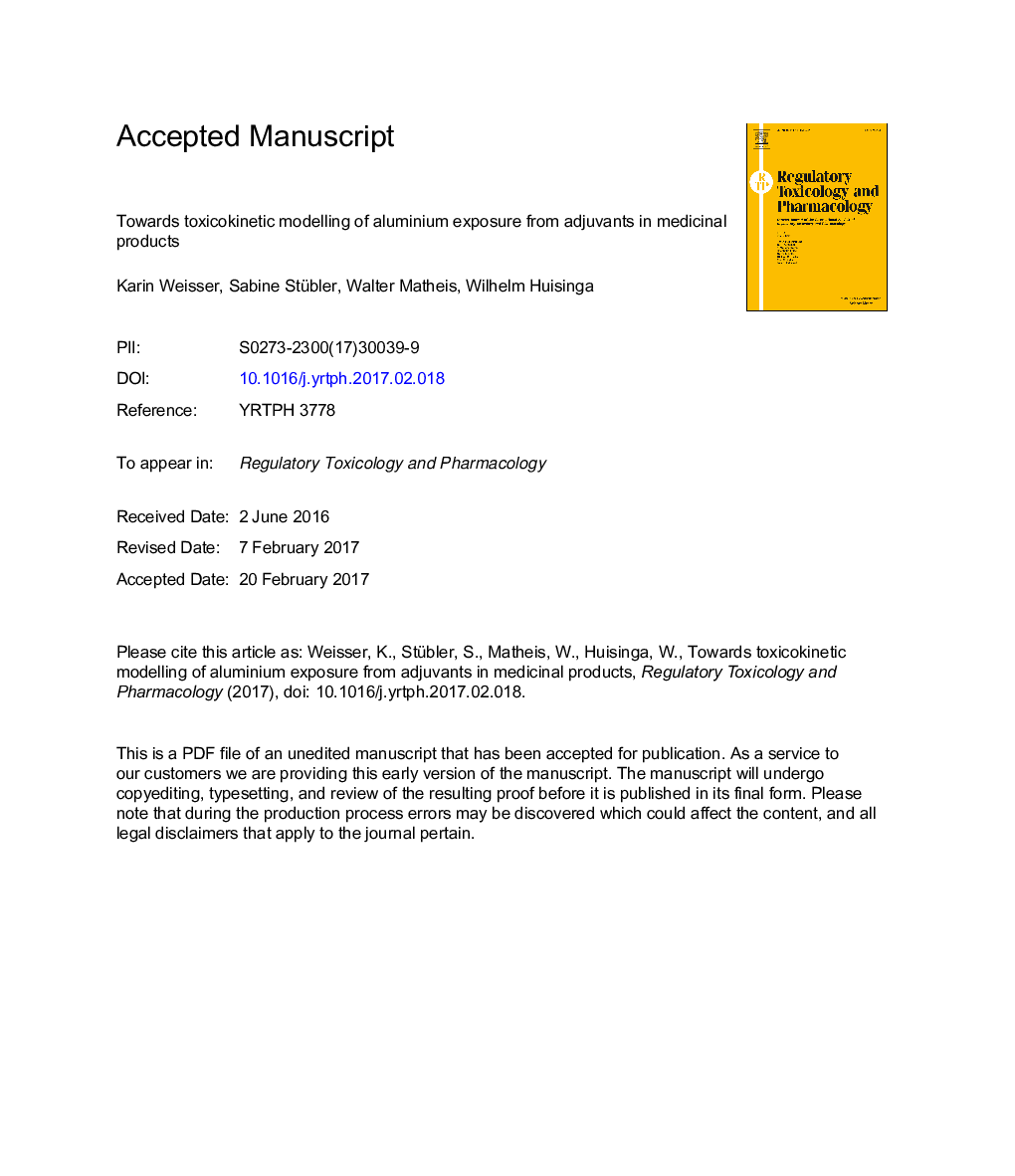| Article ID | Journal | Published Year | Pages | File Type |
|---|---|---|---|---|
| 5561134 | Regulatory Toxicology and Pharmacology | 2017 | 47 Pages |
Abstract
As a potentially toxic agent on nervous system and bone, the safety of aluminium exposure from adjuvants in vaccines and subcutaneous immune therapy (SCIT) products has to be continuously re-evaluated, especially regarding concomitant administrations. For this purpose, knowledge on absorption and disposition of aluminium in plasma and tissues is essential. Pharmacokinetic data after vaccination in humans, however, are not available, and for methodological and ethical reasons difficult to obtain. To overcome these limitations, we discuss the possibility of an in vitro-in silico approach combining a toxicokinetic model for aluminium disposition with biorelevant kinetic absorption parameters from adjuvants. We critically review available kinetic aluminium-26 data for model building and, on the basis of a reparameterized toxicokinetic model (Nolte et al., 2001), we identify main modelling gaps. The potential of in vitro dissolution experiments for the prediction of intramuscular absorption kinetics of aluminium after vaccination is explored. It becomes apparent that there is need for detailed in vitro dissolution and in vivo absorption data to establish an in vitro-in vivo correlation (IVIVC) for aluminium adjuvants. We conclude that a combination of new experimental data and further refinement of the Nolte model has the potential to fill a gap in aluminium risk assessment.
Keywords
Related Topics
Life Sciences
Environmental Science
Health, Toxicology and Mutagenesis
Authors
Karin Weisser, Sabine Stübler, Walter Matheis, Wilhelm Huisinga,
